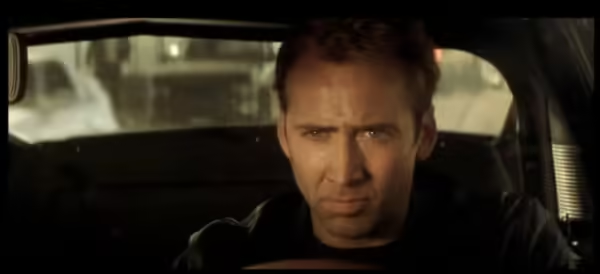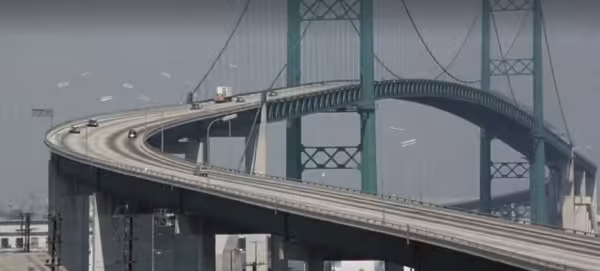
The classic car film and its 2000 remake heavily feature Pedro and the Harbor Area.
With such a vibrant and historically rich car culture, it makes perfect sense that two of Hollywood’s most famous iconic car movies were both filmed in San Pedro, and the Harbor Area. Yes, both the original Gone in 60 Seconds and its star studded 2000s remake heavily feature Pedro and the surrounding neighborhoods that we cover. So in this super-sized edition of Reel San Pedro we’re celebrating the 50th anniversary of the original Gone in 60 Seconds by looking back how the movie — and its remake — shine a light on San Pedro and the Harbor Area.
An Independent Classic
Written, directed, produced, and starring stuntman H. B. Halicki, the original Gone in 60 Seconds acts as a time capsule back to ’70s Los Angeles, with its B-movie vibes showcasing the less developed and rough around the edges working class city as many older inhabitants remember it. Centering around a car thief (Halicki) and his crew on a mission to steal 50 cars, the film is built around an epic 40 minute long car chase that still stands as one of Hollywood’s longest. If you’re still not sure just how in love with car culture this movie is, the first credit in the film is “ELEANOR,” which is the famed Shelby Mustang GT500 that features in many of the stunts. While it’s definitely a film that runs on vibes, atmosphere, and stunts more than narrative, its rough and ready spirit and incredible action still hold up to this day.
Fun fact, all of the cop cars which get regularly trashed over the run time were bought by Halicki at a government auction for a sweet $200 a pop! The DIY mentality of the filmmaker runs throughout every aspect of film, with Halicki just using local South Bay residents and bystanders as unpaid extras, meaning that multiple times during the shoot they’d run into the shot in order to “help” the victims of the crashes that the film had set up. With filming locations in Carson, Pedro, and Gardena as well as numerous name drops to multiple neighborhoods and our very own Harbor Freeway, it feels like a distinctly South Bay movie. And If you want to know just how ingrained the film is in the South Bay and Harbor regions, the Mayor of Carson at the time, Sak Yamamoto, actually played himself in the film!
The last third of the movie takes us on a thrilling ride through the area, featuring notable locations like the now closed Ronald Moran Cadillac dealership in Torrance, the International Tower in Long Beach, and of course our very own Vincent Thomas Bridge. The accuracy of the chase route is a rare feat in cinema, with police scanners calling out a bevy of actual locations including Figueroa St, Hawthorne Ave, and 190th St. A great deal of scenes even include updates from a radio DJ in Long Beach’s real life country radio station, KFOX.
In his final epic stunt Halicki jumps Eleanor over multiple cars in Redondo Beach, leading him to a severe injury of 10 impacted vertebrae.Though Gone in 60 Seconds has a long lasting legacy, sadly Halicki’s life and career were shortlived. After working on a few other films, Halicki would go on to die in 1989 in his home state of New York during a failed stunt while working on the movie that would have become Gone in 60 Seconds 2. But his impact was far from over.
Shooting Pedro for Pedro
The 2000 remake, produced by Jerry Bruckheimer and directed by Dominic Sena, takes Gone in 60 Seconds’ connection to the Harbor Area one step further, setting the action in it and shooting San Pedro for Pedro. Along with the usual sweeping shots of the port, the film shoots our town as itself rather than a stand-in for San Francisco or the other cities that it’s used for so regularly. It’s here that we meet Kip Raines (Giovanni Ribisi), the troubled younger brother of Randall “Memphis” Raines (Nicolas Cage), who lives on west 32nd Street in a little blue craftsman house in our fair city.
Kip’s found himself in hot water with some local bad boys. After a brazen auto theft from a Ferrari store that sees him chased over the Vincent Thomas Bridge — in the first of many appearances — he’s in debt to a local criminal car ring and has cops on his trail. That all brings Memphis back to town in order to help out his little brother and sets our conflict in action when it’s revealed that to save Kip’s life Memphis will have to steal 50 collectable cars for the nefarious British villain Raymond Calitri (Christopher Eccelston). As Calitri notes, after Memphis “left the South Bay, auto theft went down 47%,” making him the perfect candidate for the heist. And, of course, he has to deliver them to the Port of Long Beach within 72 hours or else his brother gets it.
It’s rare to actually get to see San Pedro portrayed as itself on film, but Gone in 60 Seconds bucks this trend from the jump. As Kip cooks for Memphis in his 32nd St home, we see a vintage San Pedro sign adorning his dirty kitchen. With Nick Cage hailing from just across the bridge in Long Beach, we should expect no less. Like the original, there’s also plenty of Long Beach action too, with Angelina Jolie’s Sway working in an LBC classic, Joe Jost’s.
Of course, where else would a film set in Pedro end? There’s only one answer, Hollywood’s favorite bridge and perennial Gone in 60 Seconds location. Yep, it’s the Vincent Thomas, showing up for one more star turn. It’s here that we get an infamous jump that sees Cage’s Raines rocket over multiple vehicles on his way to freedom after a rip-roaring chase through the port itself, moving the original massive jump from Redondo Beach in the original film to our fair shores. In an interview with Wired magazine, Cage revealed that he actually did his own stunts for the film. “I did go to a high-performance driving school and I was working with Johnny Martin on that and we were doing the 360s and the donuts and the whole kit and caboodle.” So that was actually Cage on our beloved bridge in a recreation of the iconic Shelby Mustang GT500, taking that epic leap.
Half a century after the original and almost a quarter after the remake, both of these films offer up an exciting and vibrant look at how Pedro has been used in Hollywood, as well as standing as a testament to our extensive and proud culture of car clubs and gorgeous vintage vehicles.


